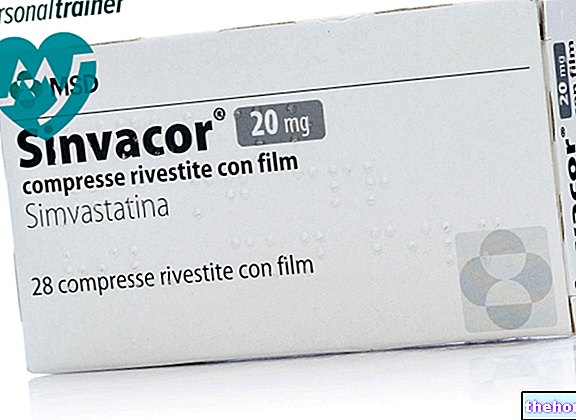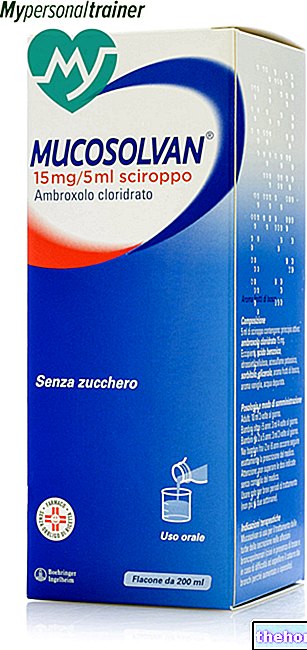Active ingredients: Cetirizine (Cetirizine dihydrochloride)
Zirtec 10 mg film-coated tablets
Zirtec package inserts are available for pack sizes:- Zirtec 10 mg film-coated tablets
- Zirtec 10 mg / ml oral drops, solution
- Zirtec 1 mg / ml oral solution
Why is Zirtec used? What is it for?
Cetirizine dihydrochloride is the active ingredient of Zirtec.
Zirtec is an antiallergic drug.
In adults and children from 6 years of age, Zirtec is indicated:
- for the treatment of nasal and ocular symptoms of seasonal and perennial allergic rhinitis.
- for the treatment of urticaria.
Contraindications When Zirtec should not be used
Do not take Zirtec
- if you have severe kidney disease (severe kidney failure with creatinine clearance below 10ml / min);
- if you are allergic to cetirizine dihydrochloride or any of the other ingredients of this medicine (listed in section 6), hydroxyzine or piperazine derivatives (active substances of other closely related medicines).
Precautions for use What you need to know before taking Zirtec
If you are a patient with kidney failure, ask your doctor for advice; if necessary, you should take a lower dose. The new dose will be defined by your doctor.
Ask your doctor for advice if you have problems urinating (in conditions such as spinal cord injuries or bladder or prostate problems).
If you are an epileptic patient or a patient at risk of seizures, you should ask your doctor for advice.
No clinically significant interactions have been observed between alcohol (at blood levels of 0.5 per thousand (g / l) corresponding to a glass of wine) and cetirizine used at recommended doses. However, no safety data are available. when higher doses of cetirizine and alcohol are taken at the same time Therefore, as with all antihistamines, it is recommended to avoid the concomitant intake of Zirtec with alcohol.
If you are scheduled for an allergy test ask your doctor if you should stop taking Zirtec for a few days before the test. This medicine can alter allergy test results.
Interactions Which drugs or foods may change the effect of Zirtec
Other medicines and Zirtec
Tell your doctor or pharmacist if you are taking, have recently taken or might take any other medicines.
Zirtec with food and drink
Food does not significantly affect the absorption of Zirtec.
Warnings It is important to know that:
Pregnancy and breastfeeding
If you are pregnant or breast-feeding, think you may be pregnant or are planning to have a baby, ask your doctor for advice before taking this medicine.
Zirtec should be avoided during pregnancy. Accidental use of the drug by a pregnant woman does not produce any harmful effects on the fetus, however the drug should only be taken when necessary and on the advice of a doctor.
Cetirizine passes into breast milk. Therefore you should not take Zirtec while breastfeeding unless you have contacted your doctor.
Driving and using machines
Clinical studies have not shown impaired attention, alertness and ability to drive after taking Zirtec at the recommended dose. You must carefully observe your response to the drug after taking Zirtec if you intend to drive, engage in potentially hazardous activities or operate machinery. It should not exceed the recommended dose.
Zirtec film-coated tablets contain lactose; if you have been told by your doctor that you have an intolerance to some sugars, contact your doctor before taking this medicinal product.
Dose, Method and Time of Administration How to use Zirtec: Posology
Always take this medicine exactly as described in this leaflet or as directed by your doctor or pharmacist. If in doubt, consult your doctor or pharmacist.
The tablets should be taken with a glass of liquid.
The tablet can be divided into 2 equal parts.
Adults and adolescents from 12 years:
10 mg once daily as 1 tablet.
Children between the ages of 6 and 12:
5 mg twice a day as a half tablet twice a day.
Patients with renal impairment
For patients with moderate renal impairment the recommended dose is 5 mg once daily.
If you have severe kidney disease, please contact your doctor or pharmacist who can adjust the dose accordingly.
If your child has kidney disease, contact your doctor or pharmacist who can adjust the dose based on the child's needs.
If you feel that the effect of Zirtec is too weak or too strong, please tell your doctor.
Duration of treatment
The duration of treatment depends on the type, duration and course of your complaints. Ask your pharmacist for advice.
Overdose What to do if you have taken too much Zirtec
If you take more Zirtec than you should
If you think you have taken an overdose of Zirtec please tell your doctor. Your doctor will decide what measures to take if necessary.
After an overdose, the undesirable effects described below may appear with increased intensity. Adverse events such as confusion, diarrhea, dizziness, fatigue, headache, malaise, pupil dilation, itching, restlessness, sedation, somnolence, stupor, abnormal rapid heart rhythm, tremors and urinary retention have been reported.
If you forget to take Zirtec
Do not take a double dose to make up for a forgotten dose.
If you have any further questions on the use of this medicine, ask your doctor or pharmacist.
Side Effects What are the side effects of Zirtec
Like all medicines, this medicine can cause side effects, although not everybody gets them.
The following side effects are rare or very rare. However, you should stop taking the medicine and tell your doctor immediately if you notice:
- Allergic reactions, including severe reactions and angioedema (severe allergic reaction causing swelling of the face or throat).
These reactions can occur soon after taking the medicine or later.
Common side effects (may affect up to 1 in 10 patients)
- Drowsiness
- Dizziness, headache
- Pharyngitis, rhinitis (in children)
- Diarrhea, nausea, dry mouth
- Fatigue
Uncommon side effects (may affect up to 1 in 100 patients)
- Agitation
- Paresthesia (abnormal sensitivity of the skin)
- Abdominal pain
- Itching (itchy skin), rash
- Asthenia (extreme fatigue), malaise
Rare side effects (may affect up to 1 in 1000 patients)
- Allergic reactions, some severe (very rare)
- Depression, hallucinations, aggression, confusion, insomnia
- Convulsions
- Tachycardia (rapid heartbeat)
- Abnormal liver function
- Urticaria
- Edema (swelling)
- Weight gain
Very rare side effects (may affect up to 1 in 10,000 patients)
- Thrombocytopenia (low level of platelets in the blood)
- Tic (habitual spasm)
- Syncope, dyskinesia (involuntary movements), dystonia (abnormal prolonged muscle contractions), tremor, dysgeusia (altered taste)
- Blurred vision, accommodation disturbance (difficult focusing), oculogyration (eyes with uncontrolled circulatory movements)
- Angioedema (severe allergic reaction causing swelling of the face or throat), fixed drug eruption
- Abnormal urine output (involuntary emptying of the bladder during sleep at night, pain and / or difficulty urinating)
Undesirable effects with frequency not known (frequency cannot be estimated from the available data)
- Increased appetite
- Suicidal ideation (recurrent suicidal worries or thoughts)
- Amnesia, memory impairment
- Vertigo (sensation of rotation or movement)
- Urinary retention (inability to completely empty the bladder)
If you get any side effects, talk to your doctor or pharmacist. This includes any possible side effects not listed in this leaflet.
Expiry and Retention
Keep this medicine out of the sight and reach of children.
Do not use this medicine after the expiry date which is stated on the carton and blister. The expiry date refers to the last day of that month.
This medicine does not require any special storage conditions.
Composition and pharmaceutical form
What Zirtec contains
- The active ingredient is cetirizine dihydrochloride. One film-coated tablet contains 10 mg of cetirizine dihydrochloride.
- The other ingredients are microcrystalline cellulose, lactose monohydrate, anhydrous colloidal silica, magnesium stearate, Opadry Y-1-7000 (hydroxypropylmethylcellulose (E464), titanium dioxide (E 171), macrogol 400).
What Zirtec looks like and contents of the pack
White, oblong film-coated tablet with score line and Y-Y logo.
Pack with 1, 4, 5, 7, 10, 14, 15, 20, 21, 30, 40, 45, 50, 60, 90, 100 or 100 (10x10) tablets.
Not all pack sizes may be marketed.
Source Package Leaflet: AIFA (Italian Medicines Agency). Content published in January 2016. The information present may not be up-to-date.
To have access to the most up-to-date version, it is advisable to access the AIFA (Italian Medicines Agency) website. Disclaimer and useful information.
01.0 NAME OF THE MEDICINAL PRODUCT
ZIRTEC 10 MG TABLETS COATED WITH FILM
02.0 QUALITATIVE AND QUANTITATIVE COMPOSITION
One film-coated tablet contains 10 mg of cetirizine dihydrochloride
Excipients with known effect: one film-coated tablet contains 66.40 mg of lactose monohydrate
For the full list of excipients, see section 6.1
03.0 PHARMACEUTICAL FORM
Film-coated tablets.
White, oblong film-coated tablet with score line and Y-Y logo
The tablet can be divided into equal halves.
04.0 CLINICAL INFORMATION
04.1 Therapeutic indications
Adults and pediatric patients from 6 years of age:
- Cetirizine is indicated for the treatment of nasal and ocular symptoms of seasonal and perennial allergic rhinitis.
- Cetirizine is indicated for the symptomatic treatment of chronic idiopathic urticaria.
04.2 Posology and method of administration
Dosage
Children between the ages of 6 and 12
5 mg twice a day (half tablet twice a day).
Adults and adolescents over 12 years of age
10 mg once daily (1 tablet).
Elderly patients
Based on available data, no dose reduction is required in elderly subjects with normal renal function.
Patients with moderate to severe renal insufficiency
There are no data available documenting the efficacy / safety ratio in patients with renal insufficiency. Since cetirizine is predominantly excreted via the kidney (see section 5.2), in cases where alternative treatments cannot be used, the dose intervals should be individualized according to renal function. Refer to the following table and adjust the dose as indicated. To use this dosing table, an estimate of the patient's creatinine clearance (CLcr) in ml / min is required. CLcr (ml / min) can be obtained from the serum creatinine value (mg / dl) using the following formula:
Dosage adjustment for adults with impaired renal function
In pediatric patients with renal insufficiency, the dose will have to be individually adjusted taking into account the renal clearance, age and body weight of the patient.
Patients with hepatic insufficiency
Patients with hepatic insufficiency only do not require any dosage adjustments.
Patients with hepatic and renal insufficiency
Dosage adjustment is recommended (see Patients with moderate to severe renal impairment above).
Method of administration
The tablets should be taken with a glass of liquid.
04.3 Contraindications
Hypersensitivity to the active substance, to any of the excipients listed in section 6.1, to hydroxyzine or to any derivative of piperazine.
Patients with severe renal insufficiency with creatinine clearance less than 10 ml / min.
04.4 Special warnings and appropriate precautions for use
At therapeutic doses, there was no evidence of clinically significant interactions with alcohol (for blood alcohol levels of 0.5 g / l). However, caution is recommended in case of concomitant alcohol intake.
Caution should be exercised in patients with predisposing factors for urinary retention (e.g. spinal cord injury, prostatic hyperplasia) as cetirizine may increase the risk of urinary retention.
Caution is advised in epileptic patients and in patients at risk for seizures.
Allergy skin tests are inhibited by antihistamines and a wash-out period (of 3 days) is required before performing them.
Patients with rare hereditary problems of galactose intolerance, the Lapp lactase deficiency or glucose-galactose malabsorption should not take cetirizine film-coated tablets.
Pediatric population
Use of the film-coated tablet formulation is not recommended in children under 6 years of age as this formulation does not allow for appropriate dose adjustment.
04.5 Interactions with other medicinal products and other forms of interaction
Due to the pharmacokinetic, pharmacodynamic and tolerability profile of cetirizine, no interactions are expected with this antihistamine. In drug-drug interaction studies, in fact, neither pharmacodynamic nor significant pharmacokinetic interactions were reported, in particular with pseudoephedrine or theophylline (400 mg / day).
The extent of absorption of cetirizine is not reduced by food, although the rate of absorption is decreased.
04.6 Pregnancy and breastfeeding
Pregnancy
Very few clinical data on exposed pregnancies are available for cetirizine. Animal studies do not show direct or indirect harmful effects with respect to pregnancy, embryonal / fetal development, parturition or postnatal development. Prescribing to pregnant women should be done with caution.
Pregnancy
Cetirizine is excreted in breast milk at concentrations representing 25% to 90% of those measured in plasma, depending on the sampling time after administration. Therefore, prescribing to breastfeeding women should be done with caution.
04.7 Effects on ability to drive and use machines
Objective measurements of ability to drive, time to fall asleep and performance on the assembly line did not demonstrate any clinically relevant effect at the recommended dose of 10 mg.
Patients intending to drive vehicles, engage in potentially hazardous activities or operate machinery should not exceed the recommended dose and take into account the individual response to the drug.
In sensitive patients, the concomitant intake of cetirizine with alcohol or other CNS depressant substances may cause a "further decrease in alertness" and impaired performance.
04.8 Undesirable effects
Clinical studies have shown that cetirizine at the recommended dosage has minor CNS undesirable effects, including somnolence, fatigue, dizziness and headache. In some cases, paradoxical CNS stimulation has been reported.
Although cetirizine is a selective peripheral H1 receptor antagonist and is relatively free of anticholinergic activity, isolated cases of micturition difficulty, visual accommodation disturbances and dry mouth have been reported.
There have been reports of abnormal liver function with elevated liver enzyme levels accompanied by elevated bilirubin, most of which resolved following discontinuation of cetirizine dihydrochloride.
Clinical trials
In the context of double-blind controlled clinical trials, in which cetirizine was compared to placebo or other antihistamines at the recommended dosage (10 mg daily for cetirizine), for which quantitative safety data are available, they were exposed to cetirizine more than 3200 subjects.
Based on these data, the following adverse reactions with an incidence of 1.0% or greater with cetirizine 10 mg were reported in placebo-controlled trials:
Although statistically the incidence of somnolence is more common than with placebo, this event was mild to moderate in the majority of cases. Further studies in which objective tests were carried out showed that usual daily activities are not compromised at all. recommended daily dose in young healthy volunteers.
Adverse reactions with an incidence of 1.0% or greater in children aged 6 months to 12 years in placebo-controlled clinical trials are:
Post-marketing experience
In addition to the adverse reactions from clinical trials listed in the previous section, the following undesirable effects have been reported during post-marketing experience.
Undesirable effects are described according to MedDRA by system organ class and according to the frequency defined based on post-marketing experience.
Frequencies are defined as follows: very common (≥1 / 10); common (≥1 / 100,
Disorders of the blood and lymphatic system:
Very rare: thrombocytopenia
Disorders of the immune system:
Rare: hypersensitivity
Very rare: anaphylactic shock
Metabolism and nutrition disorders:
Not known: increased appetite
Psychiatric disorders:
Uncommon: agitation
Rare: aggression, confusion, depression, hallucinations, insomnia
Very rare: tics
Not known: suicidal ideation
Nervous system disorders:
Uncommon: paraesthesia
Rare: convulsions
Very rare: dysgeusia, syncope, tremor, dystonia, dyskinesia
Not known: amnesia, memory impairment
Eye disorders:
Very rare: accommodation disturbance, blurred vision, oculogyration
Ear and labyrinth disorders:
Not known: vertigo
Cardiac disorders:
Rare: tachycardia
Gastrointestinal disorders:
Uncommon: diarrhea
Hepatobiliary disorders:
Rare: impaired liver function (elevations in transaminases, alkaline phosphatase, γ-GT and bilirubin)
Skin and subcutaneous tissue disorders:
Uncommon: pruritus, rash
Rare: urticaria
Very rare: angioneurotic edema, fixed drug eruption
Renal and urinary disorders:
Very rare: dysuria, enuresis
Not known: urinary retention
General disorders and administration site conditions:
Uncommon: asthenia, malaise
Rare: edema
Diagnostic tests:
Rare: weight gain
04.9 Overdose
Symptoms
Symptoms observed following an overdose of cetirizine are mainly associated with central nervous system effects or with effects that may suggest "anticholinergic activity."
Following a dose of at least 5 times the recommended daily dose, the following adverse events have been reported: confusion, diarrhea, dizziness, fatigue, headache, malaise, mydriasis, pruritus, restlessness, sedation, somnolence, stupor, tachycardia, tremor and urinary retention.
Treatment
A specific antidote to cetirizine is not known.
In the event of an overdose, symptomatic or supportive treatment is recommended. Following recent ingestion, gastric lavage is recommended.
Cetirizine is not effectively removed by dialysis.
05.0 PHARMACOLOGICAL PROPERTIES
05.1 Pharmacodynamic properties
Pharmacotherapeutic group: piperazine derivatives, ATC code R06A E07
Cetirizine, a metabolite of hydroxyzine in humans, is a potent and selective antagonist at peripheral H1 receptors. Receptor binding studies in vitro they showed no measurable affinity for other receptors other than H1.
In addition to the anti-H1 effect, cetirizine has antiallergic activity: at a dose of 10 mg once or twice a day, it inhibits the late recruitment phase of eosinophils, in the skin and conjunctiva of atopic subjects exposed to allergens.
Studies in healthy volunteers show that cetirizine, at doses of 5 and 10 mg, markedly inhibits the wheal and erythematous reactions induced by very high concentrations of histamine in the skin, but the correlation with efficacy is not established.
In a 35-day study in children aged 5 to 12 years, there was no evidence of tolerance to the antihistamine effect (suppression of wheals and erythema) of cetirizine. After discontinuation of repeated dose treatment with cetirizine, the skin recovers its normal reactivity to histamine within 3 days.
In a 6-week placebo-controlled study in 186 patients with allergic rhinitis and concomitant mild to moderate asthma, cetirizine at a dose of 10 mg once daily improved rhinitis symptoms without affecting lung function. . This study supports the safety of cetirizine administration in allergic patients with mild or moderate asthma.
In a placebo-controlled study, cetirizine, given at the high daily dose of 60 mg for seven days, did not cause a statistically significant prolongation of the QT interval.
Cetirizine, at the recommended dosage, has been shown to improve the quality of life of patients with seasonal and perennial allergic rhinitis.
05.2 Pharmacokinetic properties
The steady-state plasma concentration is approximately 300 ng / mL and is reached within 1.0 ± 0.5 hours. No accumulation was observed following daily doses of 10 mg of cetirizine for 10 days. The pharmacokinetic distribution parameters, such as peak plasma (Cmax) and area under the curve (AUC), are unimodal in healthy volunteers.
The extent of absorption of cetirizine is not reduced by food, although the rate of absorption is decreased. The degree of bioavailability of cetirizine is similar when taken as a solution, capsule or tablet.
The apparent volume of distribution is 0.50 l / kg. The plasma protein binding of cetirizine is 93 ± 0.3%. Cetirizine does not alter the binding of warfarin to plasma proteins.
Cetirizine does not undergo extensive first pass metabolism. About two-thirds of the dose is excreted unchanged in the urine. The terminal half-life was approximately 10 hours.
Cetirizine exhibits linear kinetics between 5 mg and 60 mg.
Special populations
Senior citizens: In 16 elderly subjects following a single oral dose of 10 mg, the half-life increased by approximately 50% and the clearance decreased by 40% compared to normal subjects. The reduction of cetirizine clearance in these volunteers elderly appears to be related to decreased renal function.
Children: the half-life of cetirizine was approximately 6 hours in children aged 6 to 12 years, 5 hours in children aged 2 to 6 years and reduced to 3.1 hours in children aged 6 to 24 months.
Patients with renal insufficiency: the pharmacokinetics of the drug in patients with mild renal insufficiency (creatinine clearance greater than 40 ml / min) were similar to that of healthy volunteers. Patients with moderate renal impairment had a 3-fold higher half-life and a 70% reduction in clearance compared to healthy volunteers.
Patients on hemodialysis (creatinine clearance less than 7 ml / min), given a single oral dose of 10 mg of cetirizine, had a three-fold increase in half-life and a 70% decrease in clearance. clearance of normal subjects. Cetirizine is eliminated in low quantities by hemodialysis. Dosage adjustment is necessary in patients with moderate to severe renal impairment (see section 4.2).
Patients with hepatic insufficiency: Patients with chronic liver disease (hepatocellular, cholestatic and biliary cirrhosis) who received a single dose of 10 or 20 mg of cetirizine had a 50% increase in half-life along with a 40% decrease in clearance compared to subjects healthy.
Dosage adjustment is necessary in patients with hepatic insufficiency only if associated with renal insufficiency.
05.3 Preclinical safety data
Non-clinical data reveal no special hazard for humans based on conventional studies of safety pharmacology, repeated dose toxicity, genotoxicity, carcinogenic potential, reproductive toxicity.
06.0 PHARMACEUTICAL INFORMATION
06.1 Excipients
- Microcrystalline cellulose
- Lactose monohydrate
- Colloidal anhydrous silica
- Magnesium stearate
- Opadry Y-1-7000 which consists of:
- Hydroxypropylmethylcellulose (E 464)
- Titanium dioxide (E 171)
- Macrogol 400
06.2 Incompatibility
Not relevant.
06.3 Period of validity
5 years
06.4 Special precautions for storage
This medicine does not require any special storage conditions.
06.5 Nature of the immediate packaging and contents of the package
The tablets are contained in transparent, colorless, inert PVC blisters heat-sealed with lacquered aluminum foil. These blisters are contained in a cardboard box.
Packs of 1, 4, 5, 7, 10, 14, 15, 20, 21, 30, 40, 45, 50, 60, 90, 100 or 100 (10x10) tablets.
Not all pack sizes may be marketed.
06.6 Instructions for use and handling
No special instructions.
07.0 MARKETING AUTHORIZATION HOLDER
UCB Pharma S.p.A. - Via Gadames 57 - 20151 Milan
08.0 MARKETING AUTHORIZATION NUMBER
7 tablets A.I.C. n. 026894042
10 tablets A.I.C. n. 026894067
20 tablets A.I.C. n. 026894016
09.0 DATE OF FIRST AUTHORIZATION OR RENEWAL OF THE AUTHORIZATION
7 tablets 22.07.2002 / 14.11.2011
10 tablets 30.10.2003 / 14.11.2011
20 tablets 01.04.1989 / 14.11.2011
10.0 DATE OF REVISION OF THE TEXT
8 March 2013




























